Not that long ago, nobody in Fife had heard of honeyberries. Some still don’t know what they are.
But these mysterious berries could be the most popular superfruit in the region some day.
Or, at least, that is the hope of cooperative Scottish Honeyberry Growers.
So what exactly is a honeyberry?
Eight years ago, a group of eight growers in Fife took a chance on a berry from Japan.
Stuart Arbuckle, one of the growers in the cooperative, came across them while honeymooning there.
The honeyberry – part of the edible honeysuckle family – thrives in a chilly, frosty climate, hence Fife was as good a place as any to grow them.
Well-loved foodies the Hairy Bikers, Si King and the late Dave Myers, even gave honeyberries a try on their “Hairy Bikers Go Local” series.
But it has still been a pretty rocky start for the Scottish Honeyberry Growers.
‘We made a few mistakes in the early years’ with Fife honeyberries
John Wilson, one of their growers, joined the fray six years ago.
Looking back on the honeyberry business, he says: “We made a few mistakes in the early years.
“It’s been very difficult to match sales to growth. Because for the first two, three years, you get nothing.”
At West Hall Farm near Cupar, John manages eight acres of his honeyberry crop.
He says insufficient marketing from the offset led to an excess of honeyberries.
But now, they’re in a better position, with the honeyberries – frozen, freeze-dried, chocolate-covered or honeyberry jam – on the shelves in about 100 farm shops and retailers.
“It’s about year three before you harvest anything,” John explains.
“And even then it’s only a token gesture, and then year four, five and six, your yield starts to build.
“And then we’ve obviously got different ages of berries within the group.
“Trying to match what we’re harvesting to the sales has been very difficult…
“And I think we’d all admit we were a year or two too late in starting the marketing process – because we had nothing to sell initially.
“So you [we] just had to spend money on marketing and sales when we had no product. It’s difficult.
“So we ended up with a bit of an excess of berries initially.”
‘We’re delighted with how it’s going’
Eight years on though, and things are looking better for the Fife honeyberry growers.
“But we have now put the money behind the marketing and the sales, and hopefully they’re gonna grow quickly now to try and catch up with our production,” says John.
“That first year when we got berries, we should have probably been starting that process.
“We’re a bit behind the curve, but we’re catching up now.
“The whole thing is starting to take off now, and we’re delighted with how it’s going.”
It was a leap of faith.” – John Wilson, honeyberry grower.
At the start, it was a “bit of a punt”, admits John.
“It was a leap of faith.
“I’m the farm manager here, but the estate owners were very keen to try something different, and there’s not a lot more different than these things,” he laughs.
“Along with all of the other growers, we’ve spent quite a bit of money importing the plants over here.
“There’s a big cost in setting them up, but thereafter they’re not that expensive to grow.
“Nobody’s ever heard of them, so it’s all about educating people and getting them to taste them and learn the story behind them.”
The future is looking brighter though, says John, as they move in the right direction.
“Every year the bushes are getting bigger, so they haven’t reached full maturity yet,” he says.
“It takes seven years from planting the small bushes to get to full size here.
“After another year, we’ll need to start cutting them all back.
“You can see they’re getting bigger and bigger – the leaves and the berries are all on the outside – so we need to cut back a lot of that old wood.
“It will then regenerate from the centre of the bush again.”
Still though, there isn’t much financial gain to speak of.
“We’re not making any money yet,” admits John.
“But we’re hopeful then the next year or two that we certainly will.
“And that it will turn the corner. We’re very hopeful that it’s going to be a major success.
“Because it cost us a lot of money to set this all up, we haven’t got any of that back yet.
“We’re not paying our growers back enough money yet to cover their costs. We’re reinvesting all of the money from our sales into marketing and events.”
Do the honeyberries really come with health benefits?
The honeyberries have a seemingly endless list of benefits attached to them, with the growing cooperative claiming it contains anti-inflammatory compounds, has an anti-diabetic effect and can even make you run faster.
“Undoubtedly,” says John, “what’s going to make it a success is how good they are for you – and they taste good.
Catherine Sim is the co-operative’s business development manager.
She highlights a study by Northumbria University on Haskap berries (another name for honeyberries or Lonicera caerulea).
Catherine, 21, says: “We are in partnership with Northumbria University who are doing this for Haskapa berry company.
“Which is a similar berry – well, same berry, but a different name.
“But it’s not Scottish-grown, that’s importing the berry.
“They are doing lots of research, but we also have access to that research. So they are proving all these things that we manage to say.”
The study’s conclusion states that eating these Haskap berries can improve time to exhaustion, and performance in a 5k, by more than 2%.
Catherine continues: “We’ve had all that research done and we have all that science to prove it.”
Grower John adds: “I eat them every day personally,”
“I broke my back twenty odd years ago and I’ve got a lot of steel that holds me together.
“It gets very stiff and sore. But I eat them every morning with my breakfast, and I’ve noticed a huge difference personally.
“But that’s anecdotal. So you can’t really go out and tell people that because they’ll say ‘you’re the grower, you would say that’,” he laughs.
How and where can you buy the Fife honeyberries?
Freeze-fried honeyberries are one of the growers’ cooperative’s latest products.
This retains the berries’ nutrients, whilst also allowing for the product to have a much longer shelf life and gives the group more time to move the product.
To freeze-dry the berries, they remove about 80% of the moisture.
“You retain all the goodness. So in effect, you’re just concentrating all the benefits,” says John.
“Nothing has been done to that berry apart from the water being removed.
“Someone told me that the texture reminds them of a healthy rice crispy!”
Once they’re freeze-dried, they have an 18-month shelf life.
The group also sell frozen berries locally.
“When we harvest them, they’re all frozen within an hour,” says John.
“The only downside with these berries is that they all have a really thin skin.
“They’re never going to be a fresh berry, because within six, 12, hours, even if they’re refrigerated, the juice starts to seep out of them.
“You pick them up and you’ve just got purple hands. So nobody’s going to put up with that.
“So we freeze them right away off the bush, they’re frozen on farm.”
You can get your hands on honeyberries at local farm shops like Gloagburn Farm Shop, Loch Leven’s Larder, Cairnie Fruit Farm, The Scottish Deer Centre and Balgove Larder.
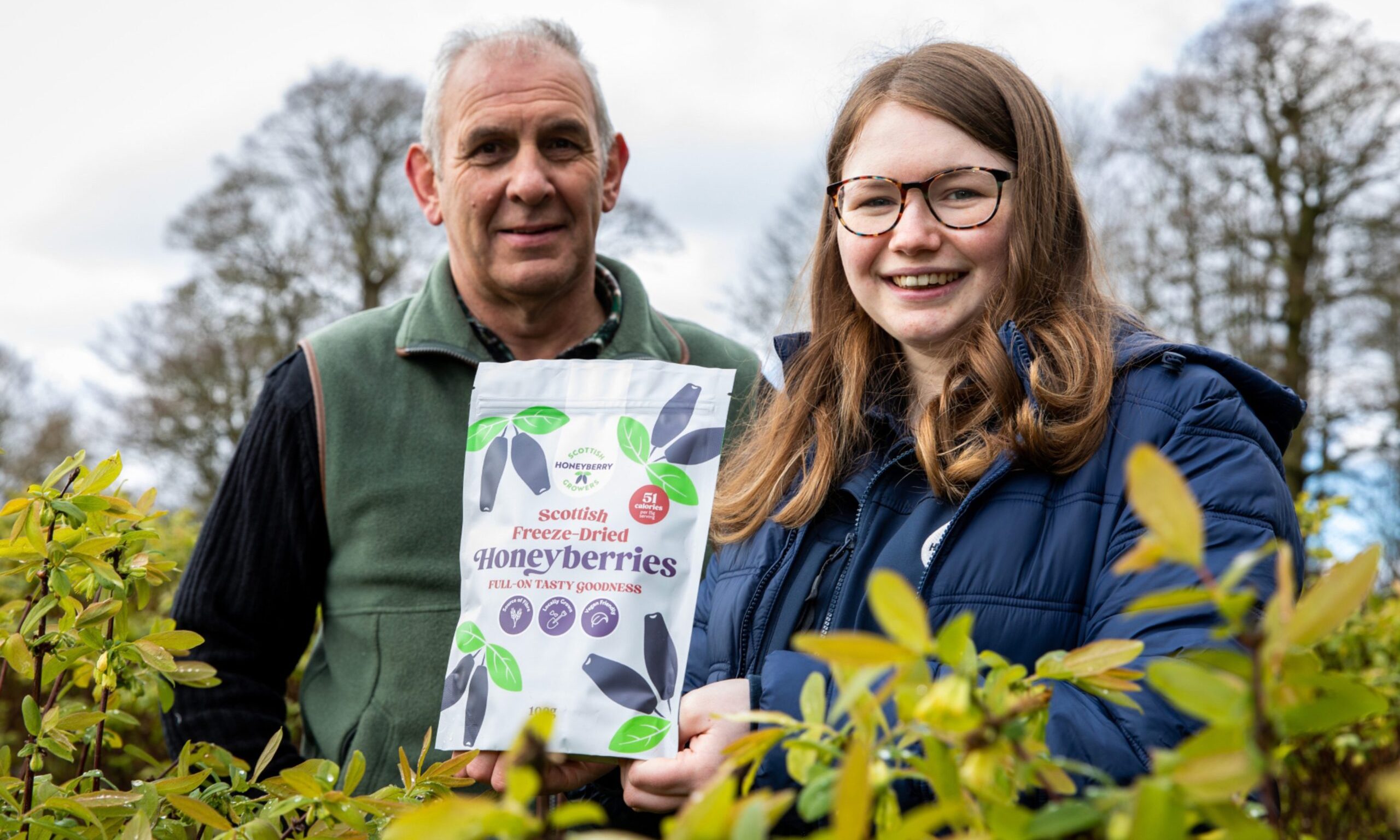
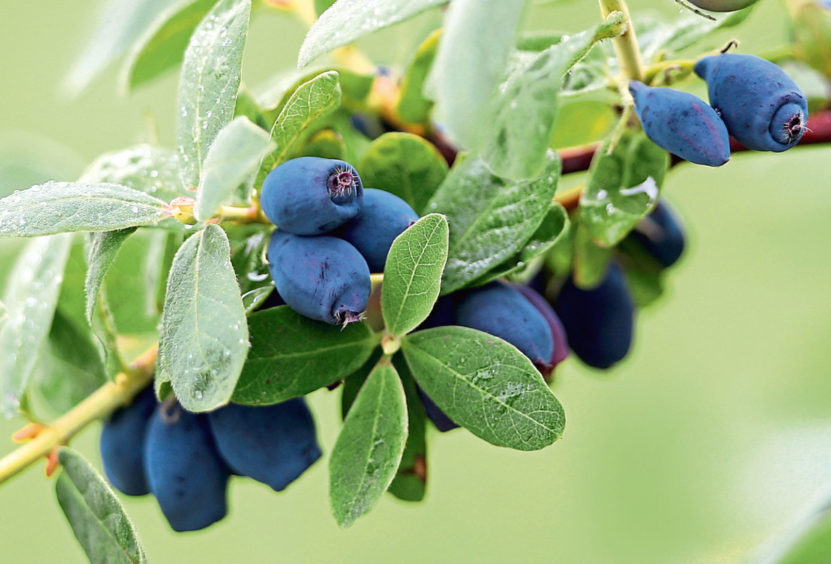
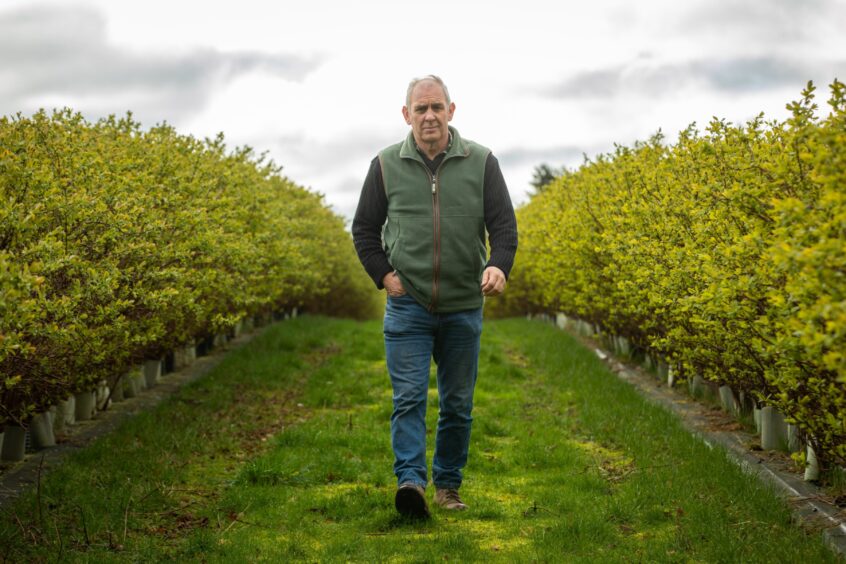
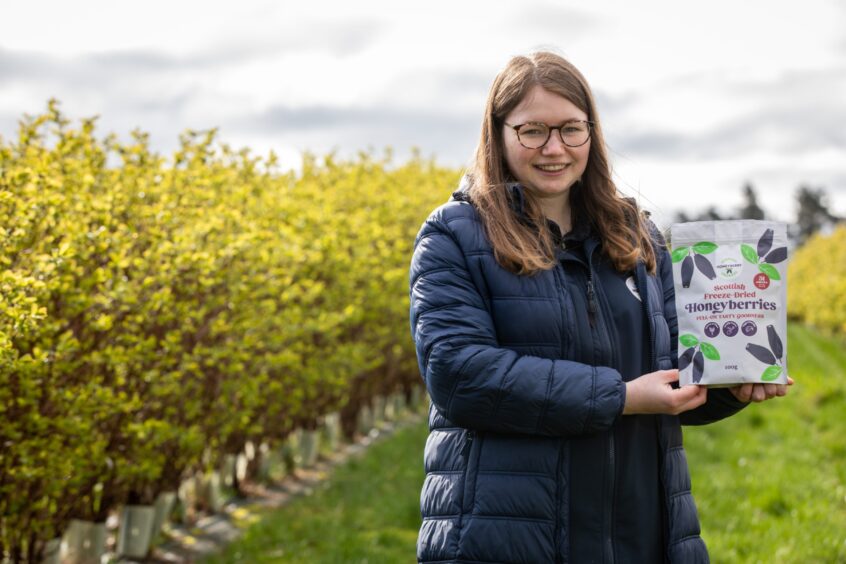
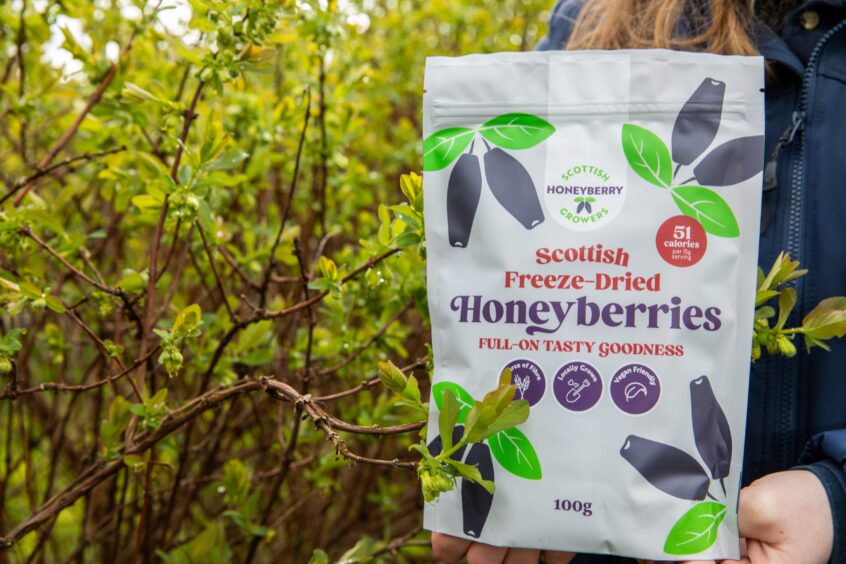






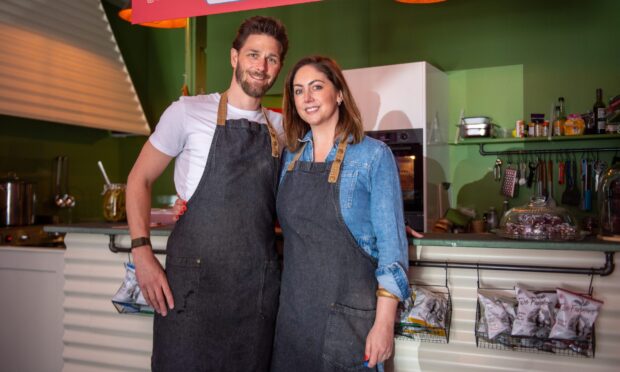



Conversation